DECEMBER 2010 LEGACY PHOTO COLLECTION
Dublinbikes, launched in 2009, was still in its infancy in 2010. The scheme, with its distinctive blue bicycles and prominent docking stations, was designed to provide a public bicycle rental service for residents and visitors to Dublin.
In 2010, Dublinbikes was notable for its lack of a commercial sponsor. This meant the bikes were simply branded with the Dublinbikes logo and the city council’s emblem. This was a conscious decision by Dublin City Council, who wanted to establish the service as a public utility before seeking commercial sponsorship.
The winter of 2010 was particularly harsh in Dublin, with several heavy snowfalls. This was unusual, as snow in Dublin is typically infrequent and doesn’t tend to disrupt daily life significantly. However, 2010 was different. The heavy snow and ice caused widespread disruption to transport and daily life, including the Dublinbikes service. Many docking stations were temporarily closed due to the hazardous conditions, and the use of the bikes was significantly reduced as people opted to stay indoors.
Despite the challenges posed by the weather, Dublinbikes continued to operate throughout the winter of 2010, providing a valuable service to those who braved the elements. The lack of a commercial sponsor did not hinder the service’s popularity, and it continued to grow in popularity in the years that followed.

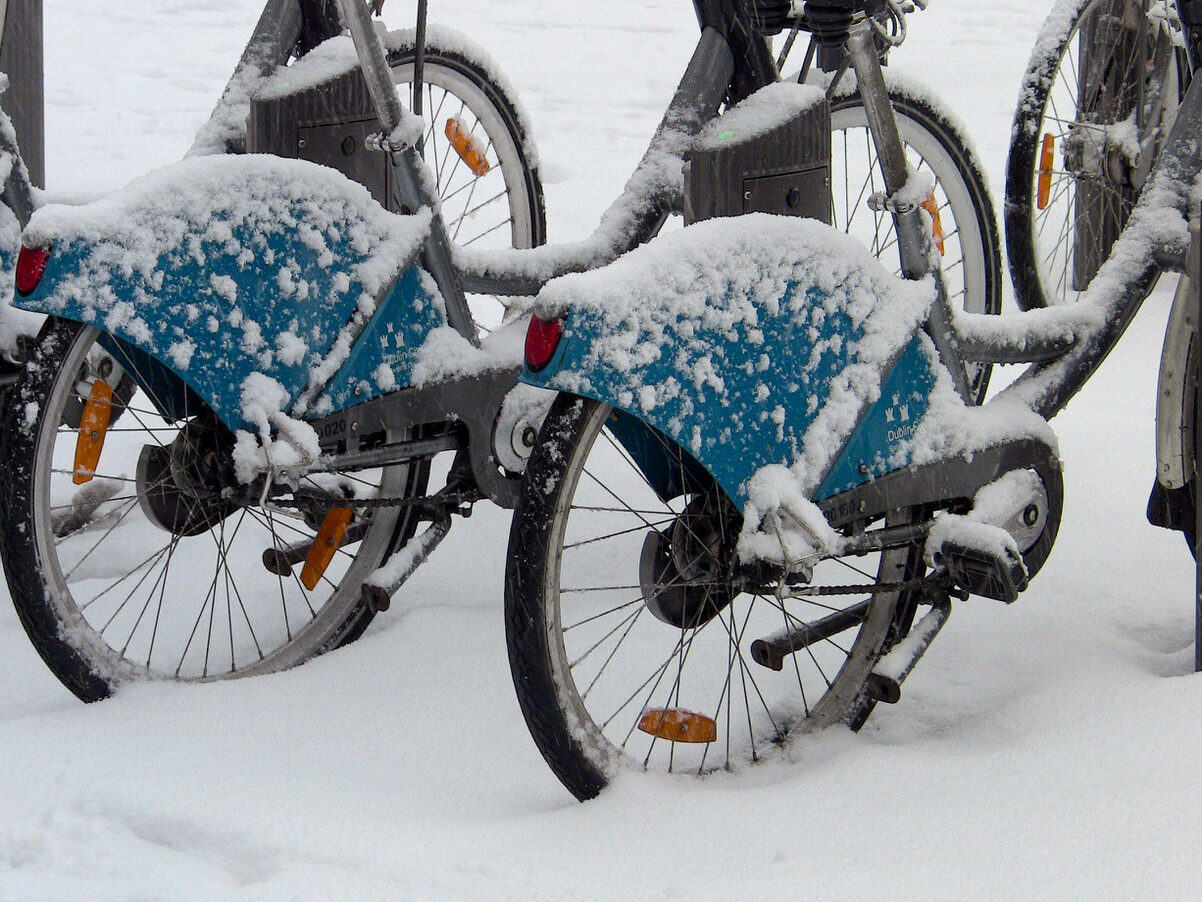
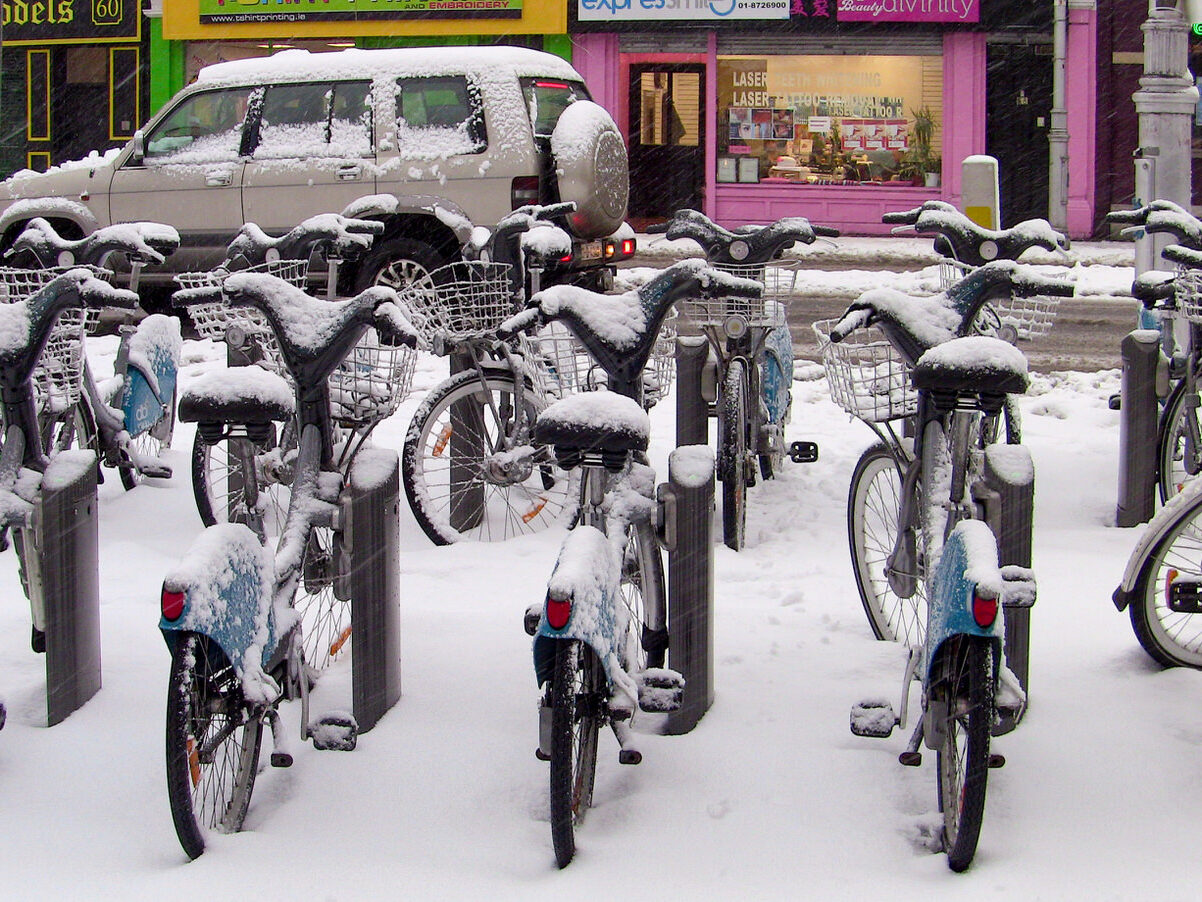
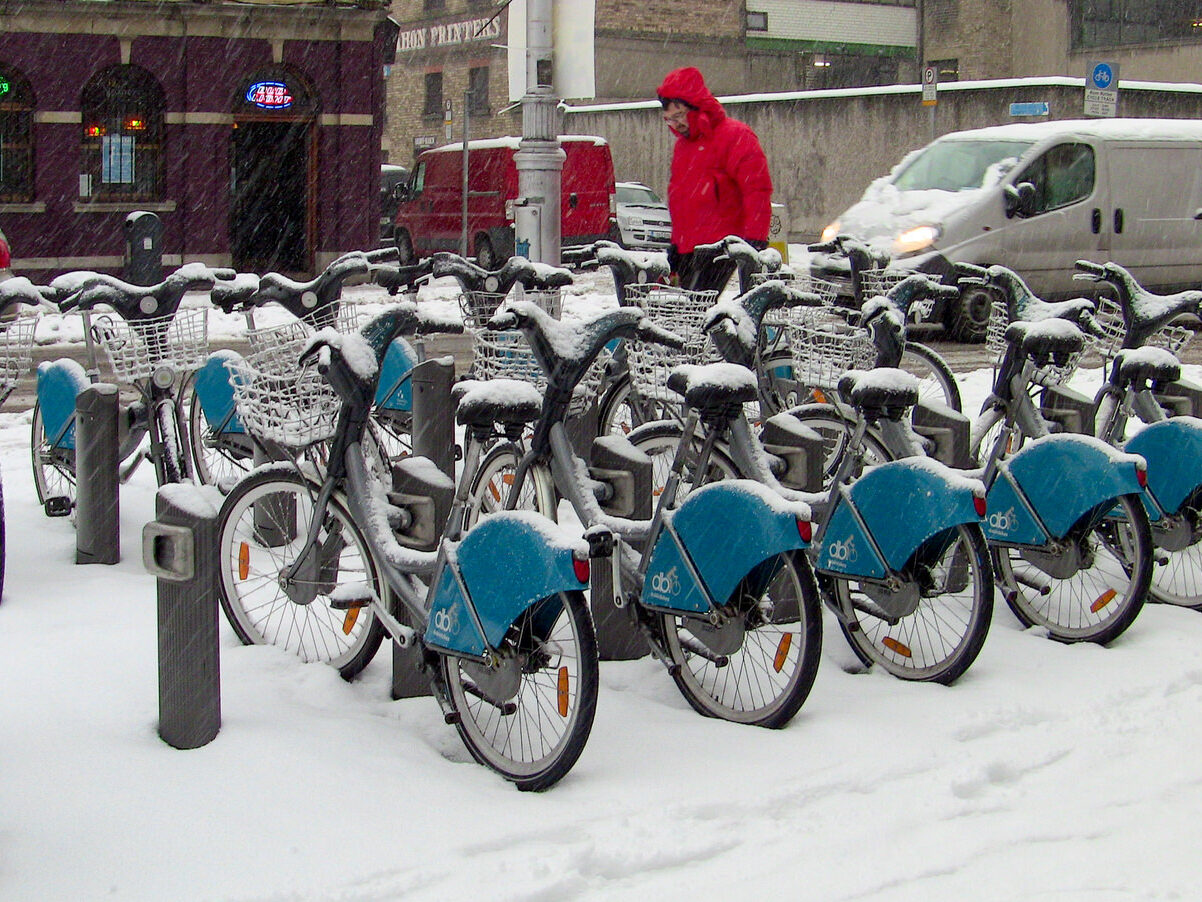
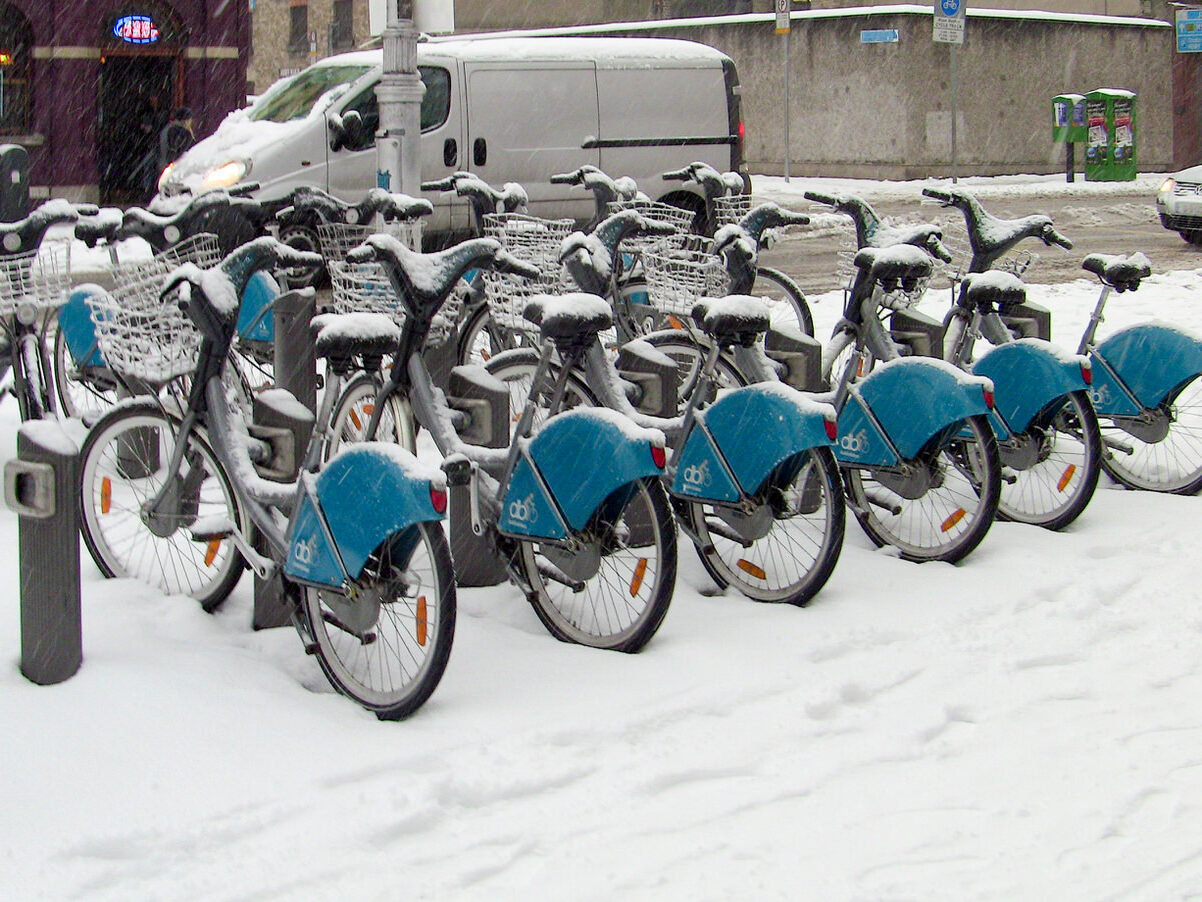
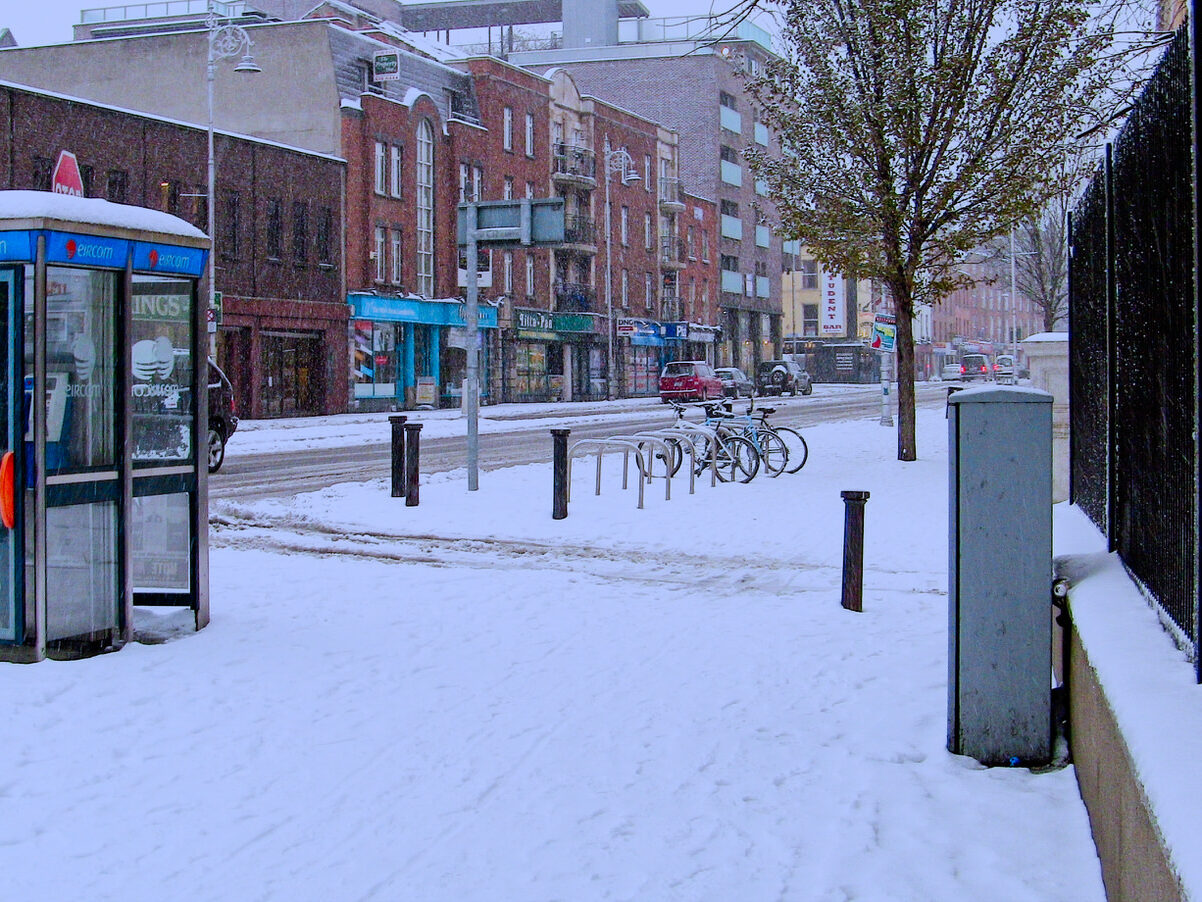
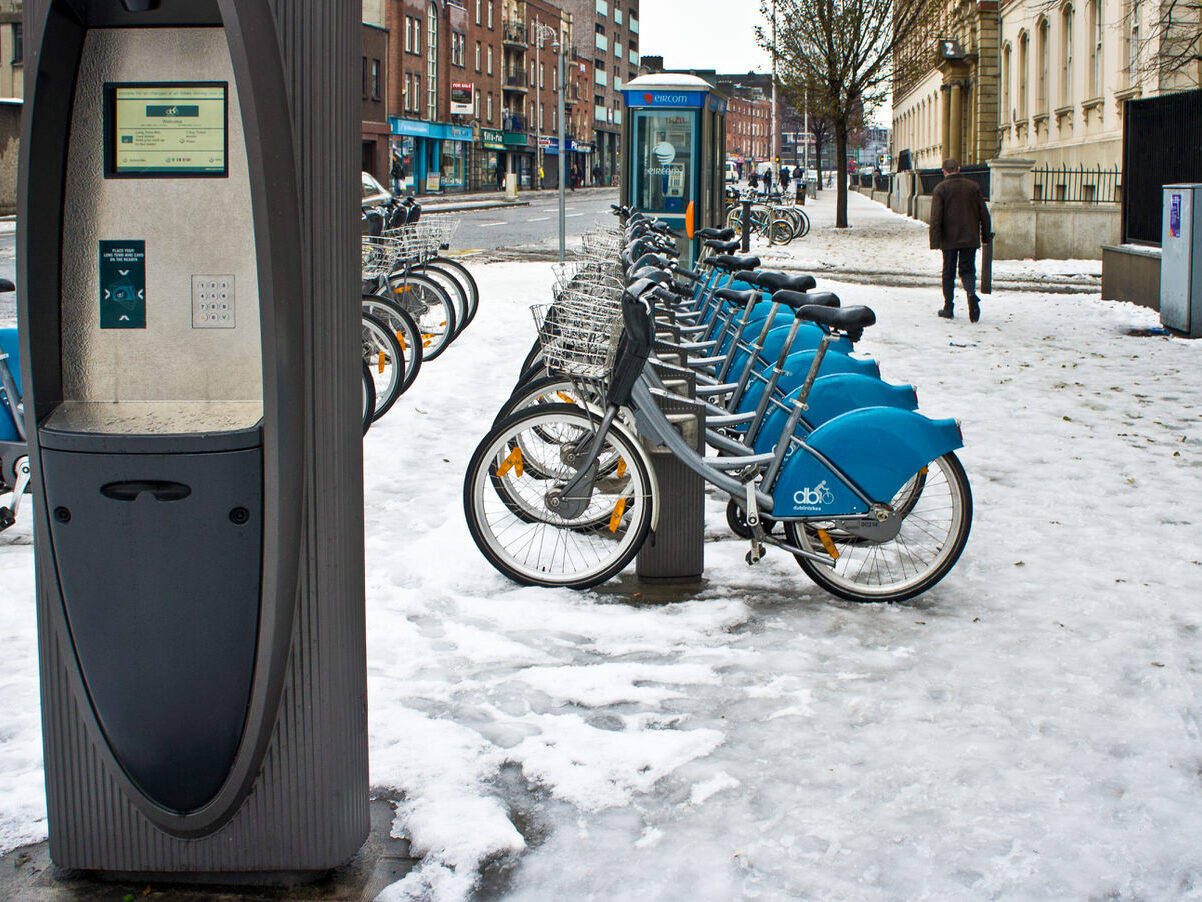
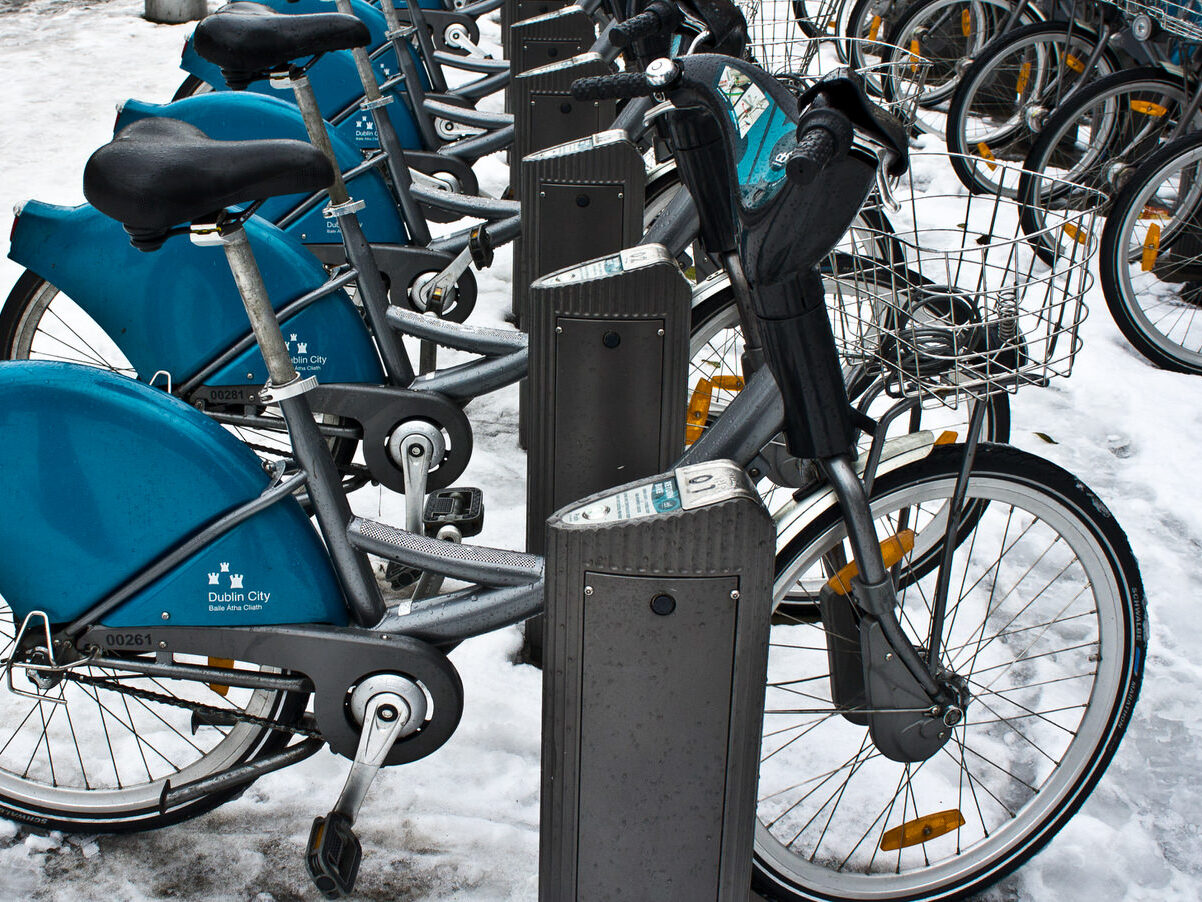
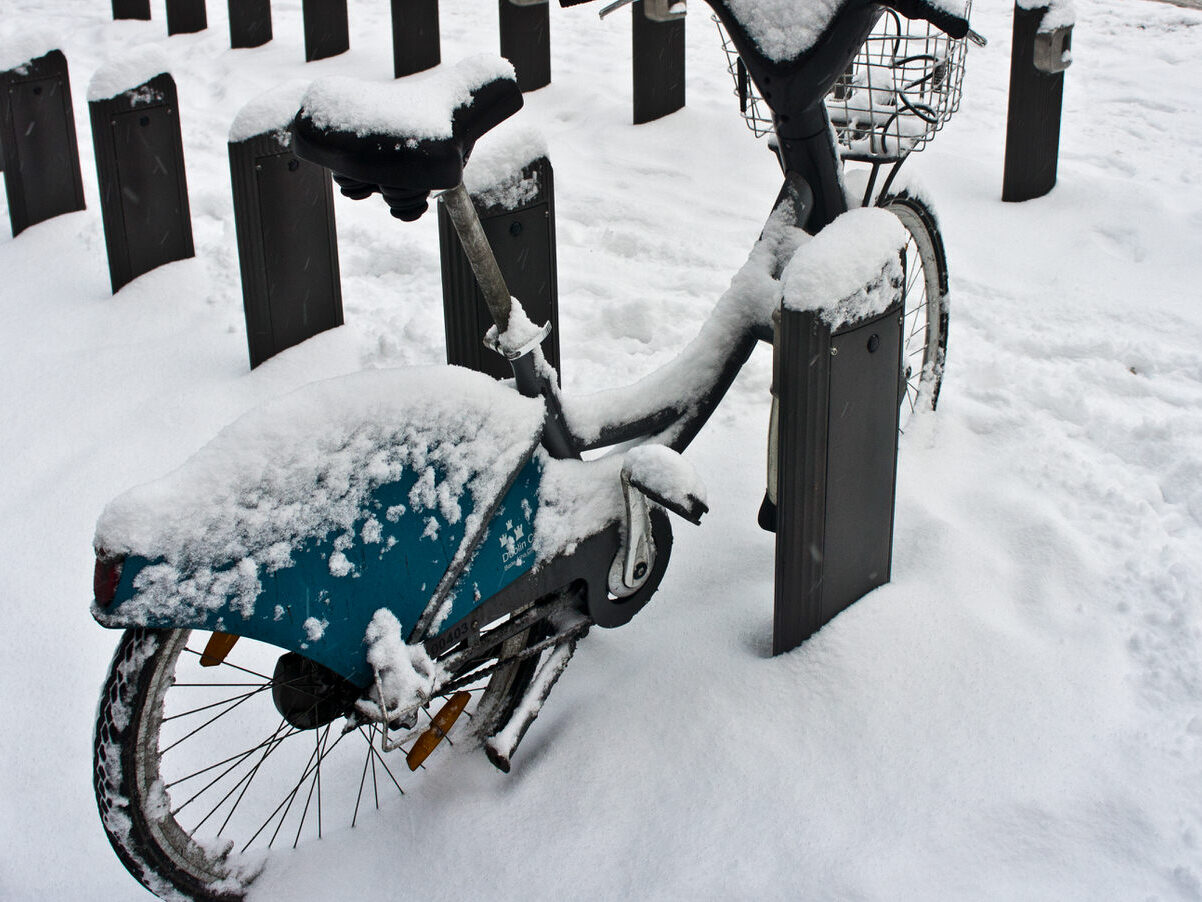
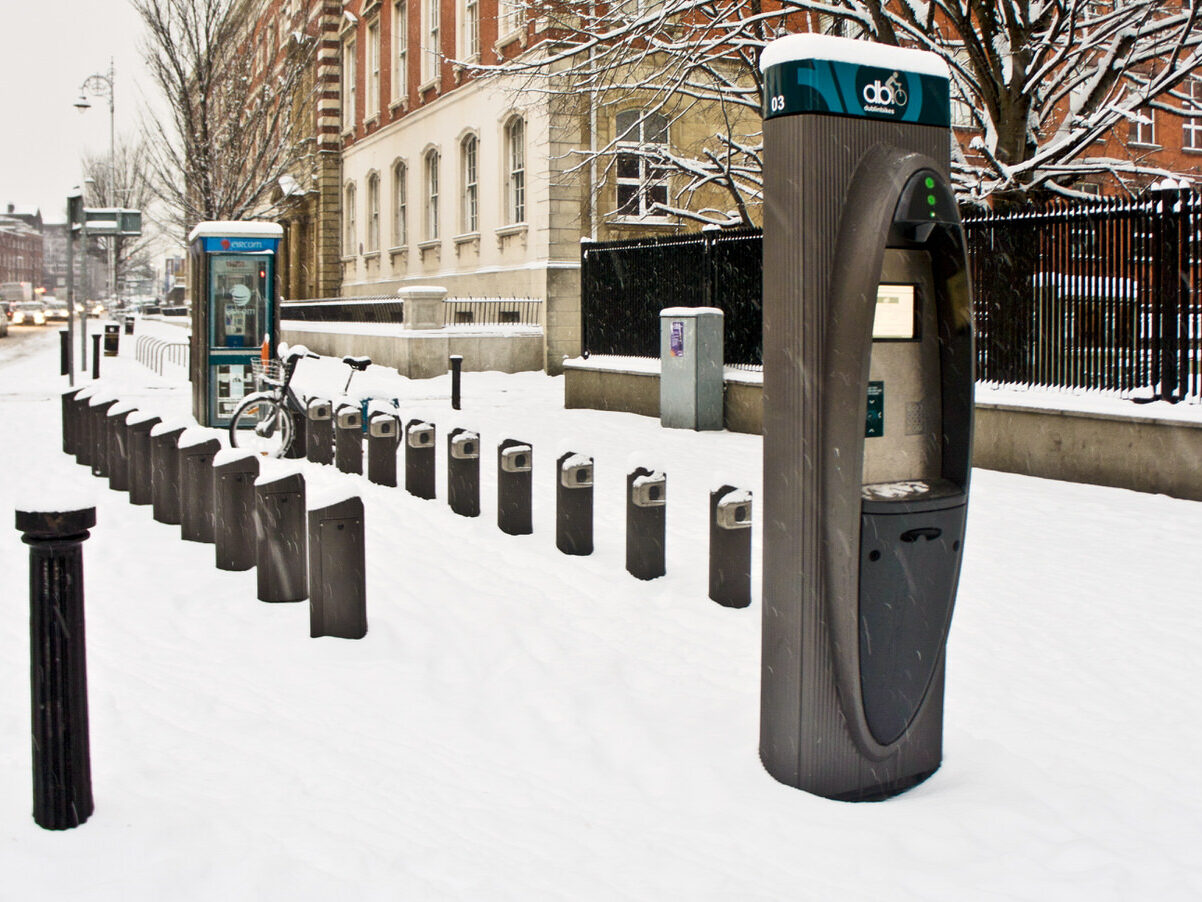
![CLONTARF GARAGE [2017 LEGACY PHOTO COLLECTION]-244445-1 CLONTARF GARAGE [2017 LEGACY PHOTO COLLECTION]-244445-1](https://excellentstreetimages.com/PublicTransportWordPress/wp-content/uploads/2024/11/CLONTARF-GARAGE-2017-LEGACY-PHOTO-COLLECTION-244445-1-1422x1067.jpg)
![CLONTARF GARAGE [2017 LEGACY PHOTO COLLECTION]-244446-1 CLONTARF GARAGE [2017 LEGACY PHOTO COLLECTION]-244446-1](https://excellentstreetimages.com/PublicTransportWordPress/wp-content/uploads/2024/11/CLONTARF-GARAGE-2017-LEGACY-PHOTO-COLLECTION-244446-1-1422x1067.jpg)
![CLONTARF GARAGE [2017 LEGACY PHOTO COLLECTION]-244443-1 CLONTARF GARAGE [2017 LEGACY PHOTO COLLECTION]-244443-1](https://excellentstreetimages.com/PublicTransportWordPress/wp-content/uploads/2024/11/CLONTARF-GARAGE-2017-LEGACY-PHOTO-COLLECTION-244443-1-1422x1067.jpg)
![CLONTARF GARAGE [2017 LEGACY PHOTO COLLECTION]-244444-1 CLONTARF GARAGE [2017 LEGACY PHOTO COLLECTION]-244444-1](https://excellentstreetimages.com/PublicTransportWordPress/wp-content/uploads/2024/11/CLONTARF-GARAGE-2017-LEGACY-PHOTO-COLLECTION-244444-1-1422x1067.jpg)
![THE LUAS TRAM STOP ON HARCOURT STREET [OUTSIDE WHAT WAS ONCE AN IMPORTANT TRAIN STATION]-242030-1 THE LUAS TRAM STOP ON HARCOURT STREET [OUTSIDE WHAT WAS ONCE AN IMPORTANT TRAIN STATION]-242030-1](https://excellentstreetimages.com/PublicTransportWordPress/wp-content/uploads/2024/10/THE-LUAS-TRAM-STOP-ON-HARCOURT-STREET-OUTSIDE-WHAT-WAS-ONCE-AN-IMPORTANT-TRAIN-STATION-242030-1-1422x1067.jpg)
![THE LUAS TRAM STOP ON HARCOURT STREET [OUTSIDE WHAT WAS ONCE AN IMPORTANT TRAIN STATION]-242034-1 THE LUAS TRAM STOP ON HARCOURT STREET [OUTSIDE WHAT WAS ONCE AN IMPORTANT TRAIN STATION]-242034-1](https://excellentstreetimages.com/PublicTransportWordPress/wp-content/uploads/2024/10/THE-LUAS-TRAM-STOP-ON-HARCOURT-STREET-OUTSIDE-WHAT-WAS-ONCE-AN-IMPORTANT-TRAIN-STATION-242034-1-1422x1067.jpg)
![THE LUAS TRAM STOP ON HARCOURT STREET [OUTSIDE WHAT WAS ONCE AN IMPORTANT TRAIN STATION]-242032-1 THE LUAS TRAM STOP ON HARCOURT STREET [OUTSIDE WHAT WAS ONCE AN IMPORTANT TRAIN STATION]-242032-1](https://excellentstreetimages.com/PublicTransportWordPress/wp-content/uploads/2024/10/THE-LUAS-TRAM-STOP-ON-HARCOURT-STREET-OUTSIDE-WHAT-WAS-ONCE-AN-IMPORTANT-TRAIN-STATION-242032-1-1422x1067.jpg)
![THE LUAS TRAM STOP ON HARCOURT STREET [OUTSIDE WHAT WAS ONCE AN IMPORTANT TRAIN STATION]-242033-1 THE LUAS TRAM STOP ON HARCOURT STREET [OUTSIDE WHAT WAS ONCE AN IMPORTANT TRAIN STATION]-242033-1](https://excellentstreetimages.com/PublicTransportWordPress/wp-content/uploads/2024/10/THE-LUAS-TRAM-STOP-ON-HARCOURT-STREET-OUTSIDE-WHAT-WAS-ONCE-AN-IMPORTANT-TRAIN-STATION-242033-1-1422x1067.jpg)
![THE LUAS TRAM STOP ON HARCOURT STREET [OUTSIDE WHAT WAS ONCE AN IMPORTANT TRAIN STATION]-242036-1 THE LUAS TRAM STOP ON HARCOURT STREET [OUTSIDE WHAT WAS ONCE AN IMPORTANT TRAIN STATION]-242036-1](https://excellentstreetimages.com/PublicTransportWordPress/wp-content/uploads/2024/10/THE-LUAS-TRAM-STOP-ON-HARCOURT-STREET-OUTSIDE-WHAT-WAS-ONCE-AN-IMPORTANT-TRAIN-STATION-242036-1-1422x1067.jpg)
![THE LUAS TRAM STOP ON HARCOURT STREET [OUTSIDE WHAT WAS ONCE AN IMPORTANT TRAIN STATION]-242031-1 THE LUAS TRAM STOP ON HARCOURT STREET [OUTSIDE WHAT WAS ONCE AN IMPORTANT TRAIN STATION]-242031-1](https://excellentstreetimages.com/PublicTransportWordPress/wp-content/uploads/2024/10/THE-LUAS-TRAM-STOP-ON-HARCOURT-STREET-OUTSIDE-WHAT-WAS-ONCE-AN-IMPORTANT-TRAIN-STATION-242031-1-1422x1067.jpg)
![THE LUAS TRAM STOP ON HARCOURT STREET [OUTSIDE WHAT WAS ONCE AN IMPORTANT TRAIN STATION]-242035-1 THE LUAS TRAM STOP ON HARCOURT STREET [OUTSIDE WHAT WAS ONCE AN IMPORTANT TRAIN STATION]-242035-1](https://excellentstreetimages.com/PublicTransportWordPress/wp-content/uploads/2024/10/THE-LUAS-TRAM-STOP-ON-HARCOURT-STREET-OUTSIDE-WHAT-WAS-ONCE-AN-IMPORTANT-TRAIN-STATION-242035-1-1422x1067.jpg)
![THE LUAS TRAM STOP ON HARCOURT STREET [OUTSIDE WHAT WAS ONCE AN IMPORTANT TRAIN STATION]-242037-1 THE LUAS TRAM STOP ON HARCOURT STREET [OUTSIDE WHAT WAS ONCE AN IMPORTANT TRAIN STATION]-242037-1](https://excellentstreetimages.com/PublicTransportWordPress/wp-content/uploads/2024/10/THE-LUAS-TRAM-STOP-ON-HARCOURT-STREET-OUTSIDE-WHAT-WAS-ONCE-AN-IMPORTANT-TRAIN-STATION-242037-1-1422x1067.jpg)
![THE LUAS TRAM STOP ON HARCOURT STREET [OUTSIDE WHAT WAS ONCE AN IMPORTANT TRAIN STATION]-242038-1 THE LUAS TRAM STOP ON HARCOURT STREET [OUTSIDE WHAT WAS ONCE AN IMPORTANT TRAIN STATION]-242038-1](https://excellentstreetimages.com/PublicTransportWordPress/wp-content/uploads/2024/10/THE-LUAS-TRAM-STOP-ON-HARCOURT-STREET-OUTSIDE-WHAT-WAS-ONCE-AN-IMPORTANT-TRAIN-STATION-242038-1-1422x1067.jpg)
![KILLARNEY STREET [DUBLINBIKES DOCKING STATION IS LOCATED HERE]-241830-1 KILLARNEY STREET [DUBLINBIKES DOCKING STATION IS LOCATED HERE]-241830-1](https://excellentstreetimages.com/PublicTransportWordPress/wp-content/uploads/2024/09/KILLARNEY-STREET-DUBLINBIKES-DOCKING-STATION-IS-LOCATED-HERE-241830-1-1422x1067.jpg)
![KILLARNEY STREET [DUBLINBIKES DOCKING STATION IS LOCATED HERE]-241831-1 KILLARNEY STREET [DUBLINBIKES DOCKING STATION IS LOCATED HERE]-241831-1](https://excellentstreetimages.com/PublicTransportWordPress/wp-content/uploads/2024/09/KILLARNEY-STREET-DUBLINBIKES-DOCKING-STATION-IS-LOCATED-HERE-241831-1-1422x1067.jpg)
![KILLARNEY STREET [DUBLINBIKES DOCKING STATION IS LOCATED HERE]-241832-1 KILLARNEY STREET [DUBLINBIKES DOCKING STATION IS LOCATED HERE]-241832-1](https://excellentstreetimages.com/PublicTransportWordPress/wp-content/uploads/2024/09/KILLARNEY-STREET-DUBLINBIKES-DOCKING-STATION-IS-LOCATED-HERE-241832-1-1422x1067.jpg)
![KILLARNEY STREET [DUBLINBIKES DOCKING STATION IS LOCATED HERE]-241827-1 KILLARNEY STREET [DUBLINBIKES DOCKING STATION IS LOCATED HERE]-241827-1](https://excellentstreetimages.com/PublicTransportWordPress/wp-content/uploads/2024/09/KILLARNEY-STREET-DUBLINBIKES-DOCKING-STATION-IS-LOCATED-HERE-241827-1-1422x1067.jpg)
![KILLARNEY STREET [DUBLINBIKES DOCKING STATION IS LOCATED HERE]-241828-1 KILLARNEY STREET [DUBLINBIKES DOCKING STATION IS LOCATED HERE]-241828-1](https://excellentstreetimages.com/PublicTransportWordPress/wp-content/uploads/2024/09/KILLARNEY-STREET-DUBLINBIKES-DOCKING-STATION-IS-LOCATED-HERE-241828-1-1422x1067.jpg)
![KILLARNEY STREET [DUBLINBIKES DOCKING STATION IS LOCATED HERE]-241829-1 KILLARNEY STREET [DUBLINBIKES DOCKING STATION IS LOCATED HERE]-241829-1](https://excellentstreetimages.com/PublicTransportWordPress/wp-content/uploads/2024/09/KILLARNEY-STREET-DUBLINBIKES-DOCKING-STATION-IS-LOCATED-HERE-241829-1-1422x1067.jpg)
![KILLARNEY STREET [DUBLINBIKES DOCKING STATION IS LOCATED HERE]-241825-1 KILLARNEY STREET [DUBLINBIKES DOCKING STATION IS LOCATED HERE]-241825-1](https://excellentstreetimages.com/PublicTransportWordPress/wp-content/uploads/2024/09/KILLARNEY-STREET-DUBLINBIKES-DOCKING-STATION-IS-LOCATED-HERE-241825-1-1422x1067.jpg)
![KILLARNEY STREET [DUBLINBIKES DOCKING STATION IS LOCATED HERE]-241826-1 KILLARNEY STREET [DUBLINBIKES DOCKING STATION IS LOCATED HERE]-241826-1](https://excellentstreetimages.com/PublicTransportWordPress/wp-content/uploads/2024/09/KILLARNEY-STREET-DUBLINBIKES-DOCKING-STATION-IS-LOCATED-HERE-241826-1-1422x1067.jpg)
![AT OR NEAR THE BROADSTONE PLAZA [OR THE GRANGEGORMAN GATE]-240199-1 AT OR NEAR THE BROADSTONE PLAZA [OR THE GRANGEGORMAN GATE]-240199-1](https://excellentstreetimages.com/PublicTransportWordPress/wp-content/uploads/2024/09/AT-OR-NEAR-THE-BROADSTONE-PLAZA-OR-THE-GRANGEGORMAN-GATE-240199-1-1422x1067.jpg)
![AT OR NEAR THE BROADSTONE PLAZA [OR THE GRANGEGORMAN GATE]-240198-1 AT OR NEAR THE BROADSTONE PLAZA [OR THE GRANGEGORMAN GATE]-240198-1](https://excellentstreetimages.com/PublicTransportWordPress/wp-content/uploads/2024/09/AT-OR-NEAR-THE-BROADSTONE-PLAZA-OR-THE-GRANGEGORMAN-GATE-240198-1-1422x1067.jpg)
![AT OR NEAR THE BROADSTONE PLAZA [OR THE GRANGEGORMAN GATE]-240197-1 AT OR NEAR THE BROADSTONE PLAZA [OR THE GRANGEGORMAN GATE]-240197-1](https://excellentstreetimages.com/PublicTransportWordPress/wp-content/uploads/2024/09/AT-OR-NEAR-THE-BROADSTONE-PLAZA-OR-THE-GRANGEGORMAN-GATE-240197-1-1422x1067.jpg)
![AT OR NEAR THE BROADSTONE PLAZA [OR THE GRANGEGORMAN GATE]-240196-1 AT OR NEAR THE BROADSTONE PLAZA [OR THE GRANGEGORMAN GATE]-240196-1](https://excellentstreetimages.com/PublicTransportWordPress/wp-content/uploads/2024/09/AT-OR-NEAR-THE-BROADSTONE-PLAZA-OR-THE-GRANGEGORMAN-GATE-240196-1-1422x1067.jpg)
![AT OR NEAR THE BROADSTONE PLAZA [OR THE GRANGEGORMAN GATE]-240195-1 AT OR NEAR THE BROADSTONE PLAZA [OR THE GRANGEGORMAN GATE]-240195-1](https://excellentstreetimages.com/PublicTransportWordPress/wp-content/uploads/2024/09/AT-OR-NEAR-THE-BROADSTONE-PLAZA-OR-THE-GRANGEGORMAN-GATE-240195-1-1422x1067.jpg)
![AT OR NEAR THE BROADSTONE PLAZA [OR THE GRANGEGORMAN GATE]-240194-1 AT OR NEAR THE BROADSTONE PLAZA [OR THE GRANGEGORMAN GATE]-240194-1](https://excellentstreetimages.com/PublicTransportWordPress/wp-content/uploads/2024/09/AT-OR-NEAR-THE-BROADSTONE-PLAZA-OR-THE-GRANGEGORMAN-GATE-240194-1-1422x1067.jpg)
![AT OR NEAR THE BROADSTONE PLAZA [OR THE GRANGEGORMAN GATE]-240193-1 AT OR NEAR THE BROADSTONE PLAZA [OR THE GRANGEGORMAN GATE]-240193-1](https://excellentstreetimages.com/PublicTransportWordPress/wp-content/uploads/2024/09/AT-OR-NEAR-THE-BROADSTONE-PLAZA-OR-THE-GRANGEGORMAN-GATE-240193-1-1422x1067.jpg)
![AT OR NEAR THE BROADSTONE PLAZA [OR THE GRANGEGORMAN GATE]-240192-1 AT OR NEAR THE BROADSTONE PLAZA [OR THE GRANGEGORMAN GATE]-240192-1](https://excellentstreetimages.com/PublicTransportWordPress/wp-content/uploads/2024/09/AT-OR-NEAR-THE-BROADSTONE-PLAZA-OR-THE-GRANGEGORMAN-GATE-240192-1-1422x1067.jpg)
![AT OR NEAR THE BROADSTONE PLAZA [OR THE GRANGEGORMAN GATE]-240191-1 AT OR NEAR THE BROADSTONE PLAZA [OR THE GRANGEGORMAN GATE]-240191-1](https://excellentstreetimages.com/PublicTransportWordPress/wp-content/uploads/2024/09/AT-OR-NEAR-THE-BROADSTONE-PLAZA-OR-THE-GRANGEGORMAN-GATE-240191-1-1422x1067.jpg)
![AT OR NEAR THE BROADSTONE PLAZA [OR THE GRANGEGORMAN GATE]-240190-1 AT OR NEAR THE BROADSTONE PLAZA [OR THE GRANGEGORMAN GATE]-240190-1](https://excellentstreetimages.com/PublicTransportWordPress/wp-content/uploads/2024/09/AT-OR-NEAR-THE-BROADSTONE-PLAZA-OR-THE-GRANGEGORMAN-GATE-240190-1-1422x1067.jpg)
![AT OR NEAR THE BROADSTONE PLAZA [OR THE GRANGEGORMAN GATE]-240189-1 AT OR NEAR THE BROADSTONE PLAZA [OR THE GRANGEGORMAN GATE]-240189-1](https://excellentstreetimages.com/PublicTransportWordPress/wp-content/uploads/2024/09/AT-OR-NEAR-THE-BROADSTONE-PLAZA-OR-THE-GRANGEGORMAN-GATE-240189-1-1422x1067.jpg)
![AT OR NEAR THE BROADSTONE PLAZA [OR THE GRANGEGORMAN GATE]-240187-1 AT OR NEAR THE BROADSTONE PLAZA [OR THE GRANGEGORMAN GATE]-240187-1](https://excellentstreetimages.com/PublicTransportWordPress/wp-content/uploads/2024/09/AT-OR-NEAR-THE-BROADSTONE-PLAZA-OR-THE-GRANGEGORMAN-GATE-240187-1-1422x1067.jpg)
![AT OR NEAR THE BROADSTONE PLAZA [OR THE GRANGEGORMAN GATE]-240188-1 AT OR NEAR THE BROADSTONE PLAZA [OR THE GRANGEGORMAN GATE]-240188-1](https://excellentstreetimages.com/PublicTransportWordPress/wp-content/uploads/2024/09/AT-OR-NEAR-THE-BROADSTONE-PLAZA-OR-THE-GRANGEGORMAN-GATE-240188-1-1422x1067.jpg)
![AT OR NEAR THE BROADSTONE PLAZA [OR THE GRANGEGORMAN GATE]-240186-1 AT OR NEAR THE BROADSTONE PLAZA [OR THE GRANGEGORMAN GATE]-240186-1](https://excellentstreetimages.com/PublicTransportWordPress/wp-content/uploads/2024/09/AT-OR-NEAR-THE-BROADSTONE-PLAZA-OR-THE-GRANGEGORMAN-GATE-240186-1-1422x1067.jpg)
![AT OR NEAR THE BROADSTONE PLAZA [OR THE GRANGEGORMAN GATE]-240185-1 AT OR NEAR THE BROADSTONE PLAZA [OR THE GRANGEGORMAN GATE]-240185-1](https://excellentstreetimages.com/PublicTransportWordPress/wp-content/uploads/2024/09/AT-OR-NEAR-THE-BROADSTONE-PLAZA-OR-THE-GRANGEGORMAN-GATE-240185-1-1422x1067.jpg)
![AT OR NEAR THE BROADSTONE PLAZA [OR THE GRANGEGORMAN GATE]-240184-1 AT OR NEAR THE BROADSTONE PLAZA [OR THE GRANGEGORMAN GATE]-240184-1](https://excellentstreetimages.com/PublicTransportWordPress/wp-content/uploads/2024/09/AT-OR-NEAR-THE-BROADSTONE-PLAZA-OR-THE-GRANGEGORMAN-GATE-240184-1-1422x1067.jpg)
![AT OR NEAR THE BROADSTONE PLAZA [OR THE GRANGEGORMAN GATE]-240183-1 AT OR NEAR THE BROADSTONE PLAZA [OR THE GRANGEGORMAN GATE]-240183-1](https://excellentstreetimages.com/PublicTransportWordPress/wp-content/uploads/2024/09/AT-OR-NEAR-THE-BROADSTONE-PLAZA-OR-THE-GRANGEGORMAN-GATE-240183-1-1422x1067.jpg)
![AT OR NEAR THE BROADSTONE PLAZA [OR THE GRANGEGORMAN GATE]-240182-1 AT OR NEAR THE BROADSTONE PLAZA [OR THE GRANGEGORMAN GATE]-240182-1](https://excellentstreetimages.com/PublicTransportWordPress/wp-content/uploads/2024/09/AT-OR-NEAR-THE-BROADSTONE-PLAZA-OR-THE-GRANGEGORMAN-GATE-240182-1-1422x1067.jpg)
![AT OR NEAR THE BROADSTONE PLAZA [OR THE GRANGEGORMAN GATE]-240181-1 AT OR NEAR THE BROADSTONE PLAZA [OR THE GRANGEGORMAN GATE]-240181-1](https://excellentstreetimages.com/PublicTransportWordPress/wp-content/uploads/2024/09/AT-OR-NEAR-THE-BROADSTONE-PLAZA-OR-THE-GRANGEGORMAN-GATE-240181-1-1422x1067.jpg)
![AT OR NEAR THE BROADSTONE PLAZA [OR THE GRANGEGORMAN GATE]-240180-1 AT OR NEAR THE BROADSTONE PLAZA [OR THE GRANGEGORMAN GATE]-240180-1](https://excellentstreetimages.com/PublicTransportWordPress/wp-content/uploads/2024/09/AT-OR-NEAR-THE-BROADSTONE-PLAZA-OR-THE-GRANGEGORMAN-GATE-240180-1-1422x1067.jpg)